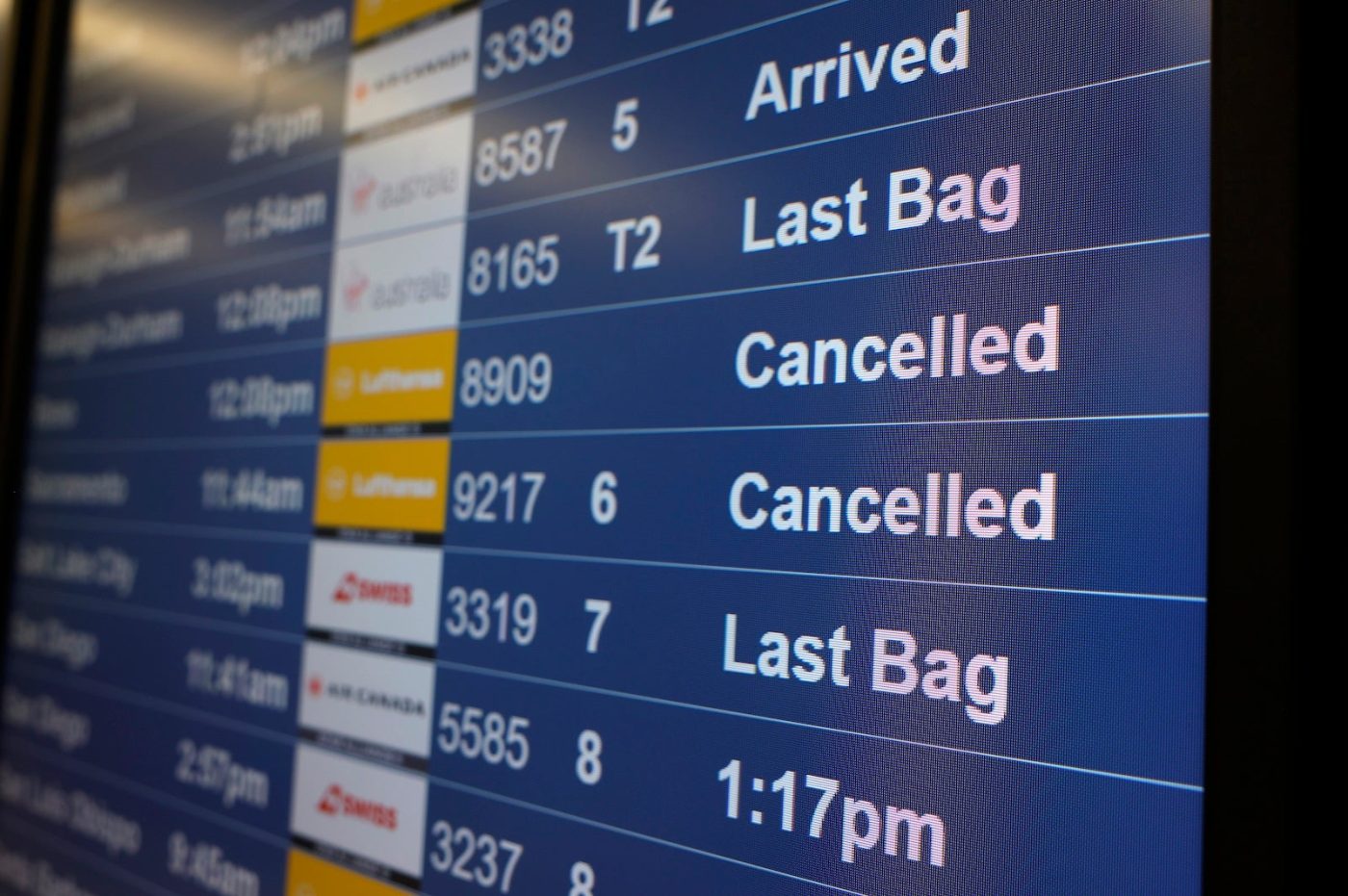As lawmakers in Washington took initial steps to end the government shutdown, air travel across the U.S. descended into widespread disruption. Since Saturday, about 32,000 flights have been delayed or canceled — more than 23,000 over the weekend and nearly 9,000 added on Monday — as staffing shortfalls in air traffic control, driven by the shutdown, hit dozens of major airports.
Terminals filled with stranded passengers, and those planes that did depart often faced hourslong backups on taxiways at hubs including Hartsfield-Jackson Atlanta (ATL) and Newark Liberty (EWR). Many travelers chose to stay home, rebook on other carriers, or drive instead. An early-season winter storm moving through the Midwest and Great Lakes on Monday threatened to worsen conditions.
Airlines had initially expected to cut about 800 to 900 flights per day due to FAA-ordered reductions tied to the shutdown. But the actual impact was far greater: on Sunday nearly 3,000 flights were canceled and nearly 11,000 more delayed, according to flight-tracking data. By Monday afternoon, airlines had already canceled more than 2,100 flights that day.
The staffing crunch was acute at several facilities. On Saturday, 18 of 22 air traffic controllers at ATL called off work, producing average ground delays that at one point exceeded five and a half hours. With fewer controllers available to manage the high daily volume of departures and arrivals, multi-hour backups became common at the largest hubs.
Major carriers reported heavy impacts. American Airlines said disruptions affected about 250,000 customers over the weekend, and its operations chief warned the following days would remain challenging. Delta canceled hundreds of flights beyond its initial plan as it sought to stabilize operations; by noon Monday the carrier had canceled 495 flights across its mainline and regional network. Delta said canceling flights is a last resort after other options are exhausted.
Chicago O’Hare (ORD) saw especially severe effects as snow combined with staffing shortages. At one point nearly 20% of departures at ORD were canceled. A reporter at ORD described long delays and passengers sleeping overnight in terminals as flights that did operate ran hours late.
To limit strain on the system, the FAA expanded required flight reductions at 40 major airports. Starting Tuesday the agency increased the mandated cuts to 6% of scheduled flights at those airports (up from 4% earlier), with 10% cuts set to begin Friday if conditions warranted. Still, actual disruptions often exceeded those thresholds because of localized staffing triggers and no-shows.
Airlines and industry groups urged Congress to pass a stopgap funding measure quickly to reopen the government and restore full staffing. “At a time of record air travel and increased reliance on cargo shipments, it is more important than ever to ensure that our nation’s airspace is safe, reliable and open,” Airlines for America said.
For travelers: expect continued disruption in the near term. Airlines have issued flexible waiver and refund policies and advised passengers to monitor flight status closely, arrive early, and have backup plans. With the holiday travel period approaching and winter weather beginning to arrive in parts of the country, passengers should prepare for the possibility of extended delays or cancellations until staffing and operations normalize.




